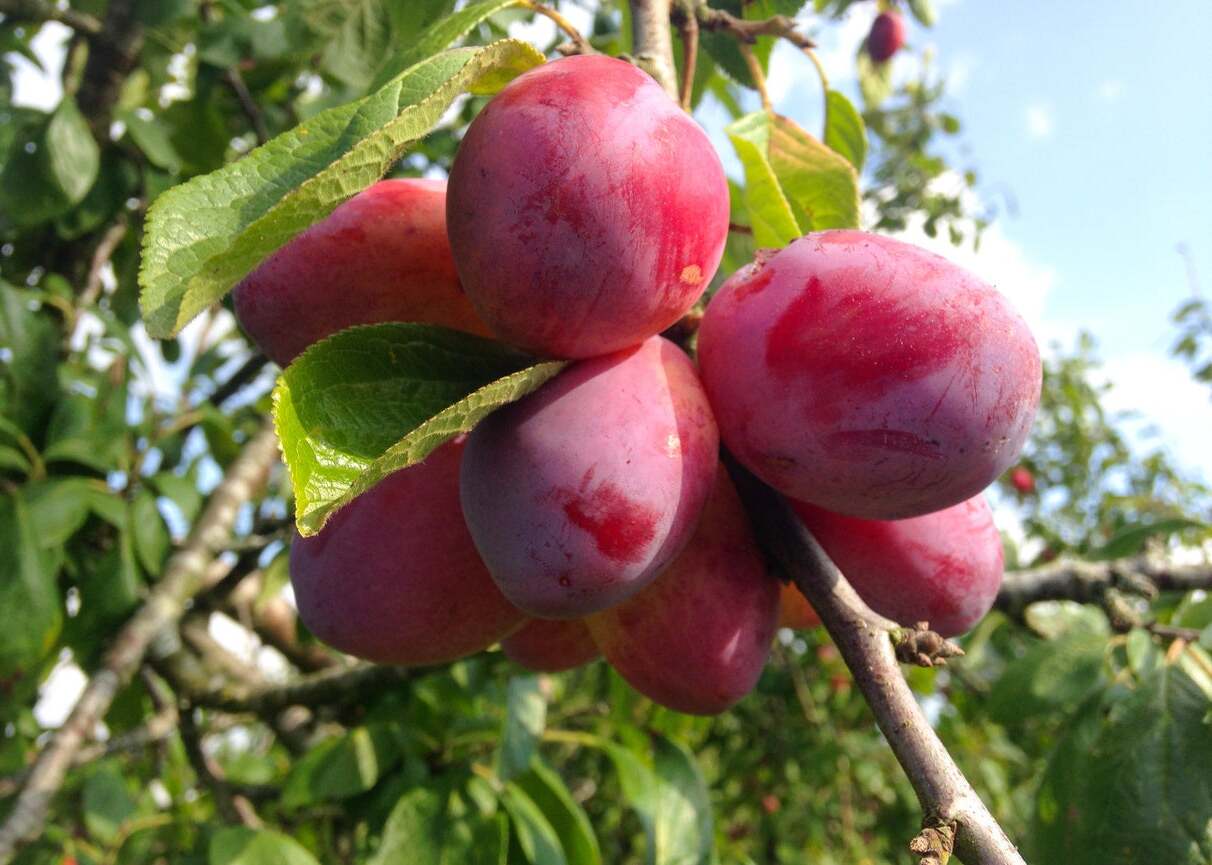
Victoria plums are more than just a tasty fruit; they carry a rich history and a bundle of interesting facts. Named after Queen Victoria, these plums have been a favorite in British gardens since the 19th century. But what makes them so special? Victoria plums are known for their sweet, juicy flavor and vibrant red skin. They’re perfect for eating fresh, making jams, or even baking into delicious desserts. Did you know they’re also packed with vitamins and antioxidants? Whether you're a gardener, a cook, or just a fruit lover, there's something fascinating about these plums. Ready to learn more? Let's dive into 20 intriguing facts about Victoria plums!
Key Takeaways:
- Victoria plums, named after Queen Victoria, are sweet, juicy, and packed with vitamins. They can be enjoyed fresh, baked into delicious treats, or used to make jam and preserves.
- Easy to grow and resistant to pests, Victoria plum trees can live for over 20 years. They are a staple in traditional British desserts and have a rich historical significance.
What Are Victoria Plums?
Victoria plums are a popular fruit known for their sweet taste and versatility. Named after Queen Victoria, these plums have a rich history and many interesting aspects.
-
Origin: Victoria plums originated in England during the 19th century. They were named after Queen Victoria, who reigned from 1837 to 1901.
-
Appearance: These plums have a distinctive oval shape and a reddish-purple skin. The flesh inside is golden yellow, making them visually appealing.
-
Taste: Known for their sweet and juicy flavor, Victoria plums are a favorite for both eating fresh and cooking.
-
Harvest Season: Typically, Victoria plums are harvested from late August to early September. This makes them a late-summer treat.
-
Nutritional Value: High in vitamins A and C, these plums also provide dietary fiber and antioxidants, making them a healthy snack.
Growing Victoria Plums
Growing Victoria plums can be rewarding for gardeners. They are relatively easy to cultivate and can thrive in various climates.
-
Climate: Victoria plums grow best in temperate climates. They require a period of cold weather to produce fruit.
-
Soil: These plums prefer well-drained soil rich in organic matter. They can tolerate a range of soil types but thrive in loamy soil.
-
Sunlight: Full sun is essential for the best fruit production. At least six hours of direct sunlight daily is recommended.
-
Watering: Regular watering is crucial, especially during dry spells. However, overwatering can lead to root rot.
-
Pruning: Pruning helps maintain the tree's shape and encourages better fruit production. It's best done in late winter or early spring.
Uses of Victoria Plums
Victoria plums are versatile and can be used in various culinary applications. Their sweet flavor makes them a favorite in many recipes.
-
Fresh Eating: Many people enjoy eating Victoria plums fresh off the tree. Their juicy sweetness makes them a delightful snack.
-
Baking: These plums are perfect for baking. They can be used in pies, tarts, and cakes, adding a sweet and tangy flavor.
-
Jam and Preserves: Victoria plums are excellent for making jam and preserves. Their high pectin content helps the jam set well.
-
Cooking: They can be cooked into sauces or compotes, which pair well with savory dishes like pork or duck.
-
Freezing: Victoria plums can be frozen for later use. This allows you to enjoy their flavor even when they are out of season.
Interesting Facts About Victoria Plums
Beyond their culinary uses and growing tips, Victoria plums have some fascinating trivia associated with them.
-
Pollination: Victoria plum trees are self-fertile, meaning they do not require another tree to produce fruit. However, having another plum tree nearby can increase yield.
-
Longevity: A well-cared-for Victoria plum tree can live and produce fruit for over 20 years.
-
Cultural Significance: In England, Victoria plums are often associated with traditional British desserts and are a staple in many households.
-
Pest Resistance: These plums are relatively resistant to pests and diseases, making them a good choice for organic gardening.
-
Historical Popularity: During Queen Victoria's reign, these plums became a symbol of British horticulture and were widely planted in gardens across the country.
The Sweet Truth About Victoria Plums
Victoria plums aren't just delicious; they're packed with nutrients and history. Originating in the 19th century, these plums have become a staple in many gardens and kitchens. Their versatility makes them perfect for jams, desserts, and even savory dishes. Plus, they're a great source of vitamins A and C, fiber, and antioxidants.
Growing Victoria plums isn't too tricky either. With the right care, you can enjoy a bountiful harvest year after year. Remember to prune regularly, water adequately, and protect them from pests.
Whether you're a seasoned gardener or just starting out, adding Victoria plums to your garden can be rewarding. Their sweet taste and health benefits make them a fantastic addition to any diet. So next time you're at the market or planning your garden, consider these delightful plums. You won't regret it!
Frequently Asked Questions
Was this page helpful?
Our commitment to delivering trustworthy and engaging content is at the heart of what we do. Each fact on our site is contributed by real users like you, bringing a wealth of diverse insights and information. To ensure the highest standards of accuracy and reliability, our dedicated editors meticulously review each submission. This process guarantees that the facts we share are not only fascinating but also credible. Trust in our commitment to quality and authenticity as you explore and learn with us.


